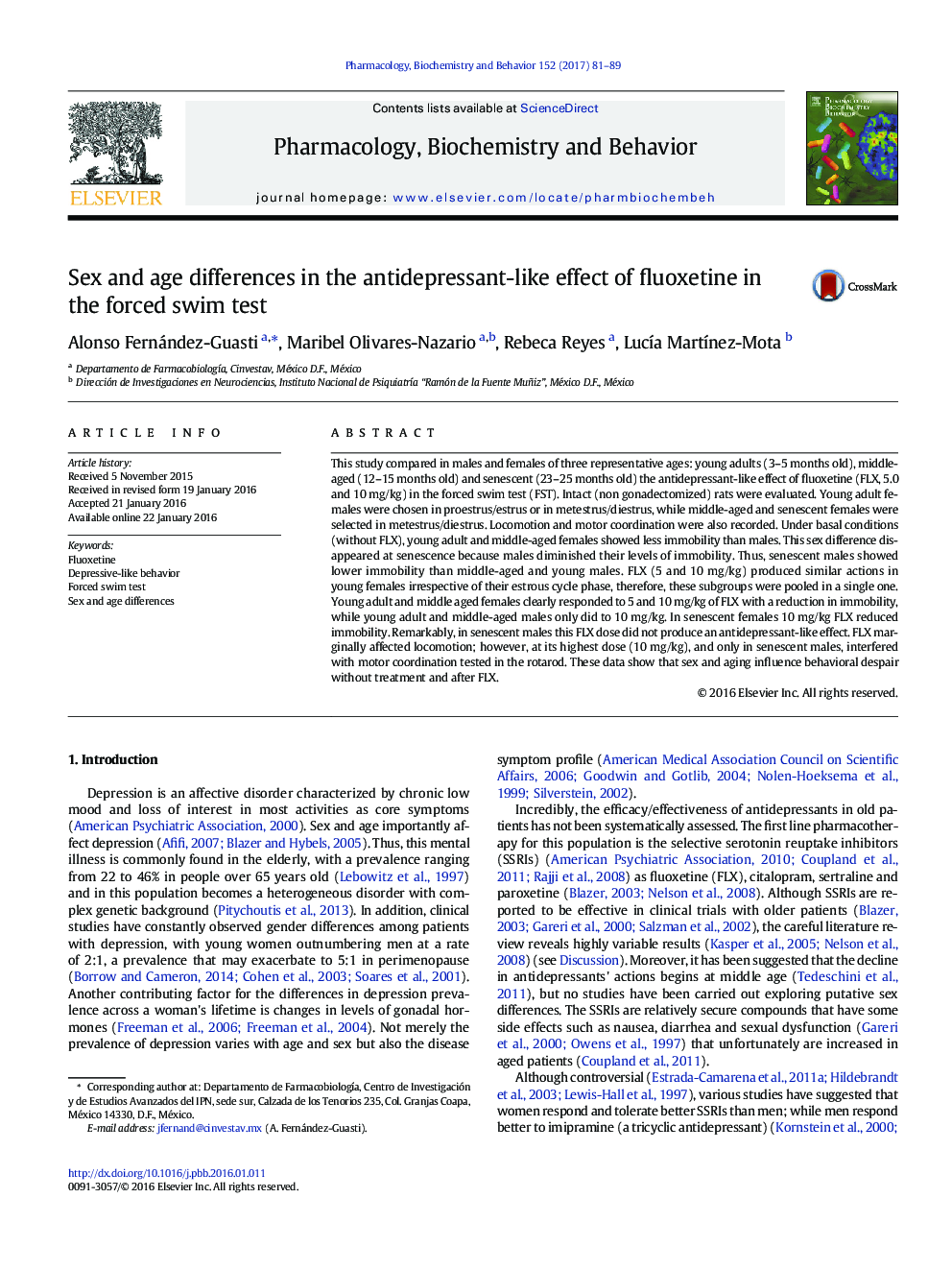| Article ID | Journal | Published Year | Pages | File Type |
|---|---|---|---|---|
| 5515256 | Pharmacology Biochemistry and Behavior | 2017 | 9 Pages |
â¢FLX reduces immobility in females of all ages but had no effect in senescent males.â¢Young females respond to lower doses of FLX than males.â¢In senescent males FLX lacks antidepressant effect but produces motor incoordination.
This study compared in males and females of three representative ages: young adults (3-5Â months old), middle-aged (12-15Â months old) and senescent (23-25Â months old) the antidepressant-like effect of fluoxetine (FLX, 5.0 and 10Â mg/kg) in the forced swim test (FST). Intact (non gonadectomized) rats were evaluated. Young adult females were chosen in proestrus/estrus or in metestrus/diestrus, while middle-aged and senescent females were selected in metestrus/diestrus. Locomotion and motor coordination were also recorded. Under basal conditions (without FLX), young adult and middle-aged females showed less immobility than males. This sex difference disappeared at senescence because males diminished their levels of immobility. Thus, senescent males showed lower immobility than middle-aged and young males. FLX (5 and 10Â mg/kg) produced similar actions in young females irrespective of their estrous cycle phase, therefore, these subgroups were pooled in a single one. Young adult and middle aged females clearly responded to 5 and 10Â mg/kg of FLX with a reduction in immobility, while young adult and middle-aged males only did to 10Â mg/kg. In senescent females 10Â mg/kg FLX reduced immobility. Remarkably, in senescent males this FLX dose did not produce an antidepressant-like effect. FLX marginally affected locomotion; however, at its highest dose (10Â mg/kg), and only in senescent males, interfered with motor coordination tested in the rotarod. These data show that sex and aging influence behavioral despair without treatment and after FLX.
